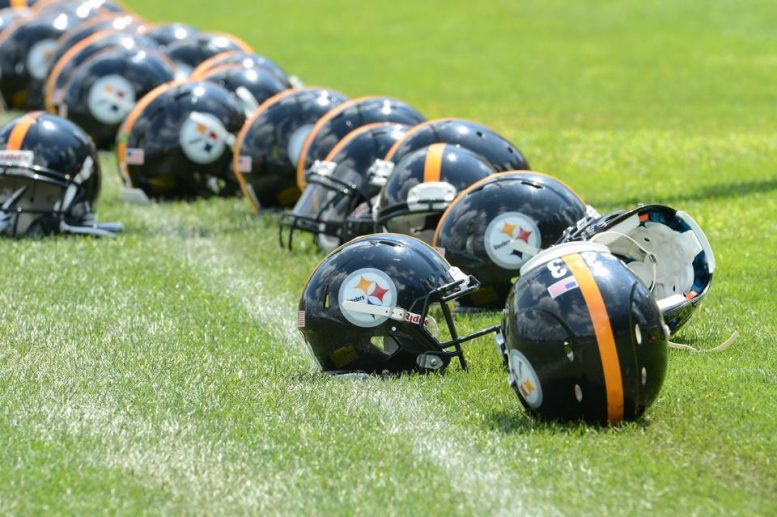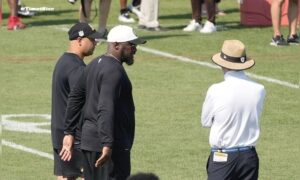For die hard football fans, any type of football action involving their favorite team is exciting, but it’s not always particularly illuminating—at least not across the board. The spring drills that NFL teams go through during OTAs and minicamp, for example, are hamstrung in terms of what type of activities are permitted to be conducted, which makes a true football evaluation process difficult.
Clearly the greatest obstacle to this May and June process is the fact that practices are not to be conducted while wearing full football attire—in other words, there are no shoulder pads, which essentially means that ti’s not football. As Pittsburgh Steelers head coach Mike Tomlin likes to call it, it is ‘football-like’, or ‘football in shorts’.
Admittedly, not every football attribute or event needs to take place with shoulder pads on in order to get a feel for a player’s capabilities. Certainly much of their character also shines through on the field regardless of how much equipment they might be wearing.
But so much of what is fundamental to football is inaccessible, to put it simply, during the spring, simply because it can’t fully be tested without full football gear, which can only be incorporated into practices with the beginning of training camp, per the Collective Bargaining Agreement.
Football is often summed up simply as blocking and tackling at a fundamental level. You don’t tackle in the spring, and what blocking you do do is a pale imitation of what happens when the pads come on.
What is lacking in particular is any meaningful representation of the running game. Ben Roethlisberger had acknowledged that the Steelers have done very little work in the running game up to this point in the offseason simply because they have not had the opportunity to do so. Running through holes with nobody there to tackle you on the other side does not tell you much about a running back.
Offensive linemen and tight ends are spared the tall tasks of butting heads with defensive linemen and outside linebackers with full earnest until training camp, but in the meantime, there is very little information of value to be gathered.
Take the example of a player such as rookie safety Gerod Holliman. According to spring reports, he was able to snag a couple of passes during practices after leading the nation last season with 14 interceptions, but he comes to the league with the reputation of being a terrible tackler.
So then, thus far, we have not learned anything about the rookie that we hadn’t already known. We knew he can catch the ball, and he showed that he can still do that. But we won’t know if he can hit and tackle for another few weeks.
In some ways, OTAs and minicamp are a means of determining which are the questions for which you seek answers. It is during training camp that you begin to piece those answers together. So now that we know which questions to start asking, we sit and wait for the opportunity to address them.








